Analysis of soil cushion buffering characteristic for rockfall impact force through discrete element numerical simulation
-
摘要:
棚洞是我国西部山区防治崩塌落石灾害的主要工程措施之一。棚洞顶板以上通常铺设由砂或碎石组成的土垫层。土垫层的作用是避免落石直接冲击棚洞,缓冲落石的冲击力。长期以来,关于土垫层厚度对缓冲效果影响的研究较少,因此,还未形成统一的理论用于指导土垫层厚度的设计。文章运用离散单元方法建立落石冲击土垫层的数值模型,探究垫层厚度和落石下落高度对土垫层缓冲落石冲击力特性的影响。研究结果表明:落石冲击力峰值与落石下落高度呈幂函数关系,顶板中心力峰值与下落高度呈线性正相关关系;随着垫层厚度的增加,落石冲击力峰值减小,当垫层厚度增加到落石直径的1.0倍之后,落石冲击力峰值与垫层厚度无关;随垫层厚度的增大,顶板中心力峰值与落石冲击力峰值的比值减小,垫层缓冲效果增大,当垫层厚度增加到落石直径1.5倍之后,垫层缓冲效果增加不明显;垫层厚度建议取值为落石直径的1.5倍。
Abstract:Rock sheds is one of the main engineering solutions for mitigating rockfall disaster in the mountainous regions of western China. Typically, the roof of a rock shed is covered with a soil cushion composed of sand or gravel. The function of soil cushion is to avoid the direct impact of rockfall on the shed and absorb the impact force of the falling rocks. For a long time, there has been limited studies on the influence of soil cushion thickness on its buffering effect, leading to a lack of a unified theory guiding the design of soil cushion thickness. In this study, the discrete element method was employed to establish a numerical model of rockfall impacting onto soil cushion, and the influence of cushion thickness and rockfall falling height on the buffering characteristics of soil cushion for the rockfall impact force was investigated. The results show that there is a power function relationship between the peak of rockfall impact force and the rockfall falling height, along with a linear positive correlation between the peak of roof center force and the rockfall falling height. The peak of rockfall impact force decreases with increasing cushion thickness. Once the cushion thickness reaches 1.0 times of the diameter of rockfall, the peak of rockfall impact force becomes independent of cushion thickness as cushion thickness increases, the ratio of the peak bottom center force to the peak rockfall impact force decreases, indicating an enhancement in the soil cushion's buffering effect. However, when the cushion thickness reaches 1.5 times of the rockfall diameter, the enhancement in buffering effect becomes less significant. Therefore, the recommended cushion thickness is 1.5 times the rockfall diameter.
-
Keywords:
- rockfall /
- soil cushion /
- buffering /
- discrete element method /
- impact force
-
0. 引言
地质灾害气象风险预警是基于气象降雨因素引发地质灾害的区域性预警,是通过分析孕育地质灾害的地质特征与引发地质灾害的降水特征建立模型算法,在地质灾害易发性基础上,结合前期过程降雨和未来预报降雨,对一定区域在未来一段时间内发生地质灾害的可能性及成灾风险进行预报预警。近20年的实践表明,地质灾害气象风险预警在防御地质灾害中发挥着“指挥棒”的作用,是地质灾害风险管控的行之有效的手段。
对降雨引发的地质灾害区域预警研究,广大学者开展了大量的研究和探索。美国地质调查局1969年完成了基于泥石流临界降雨强度预警系统的开发;1985年进行了区域内大暴雨与滑坡灾害的统计分析,建立了滑坡与降雨强度的临界降雨模型,并研发了早期的滑坡灾害预警系统[1];日本学者通过对流域实况降雨与地下水渗流场分析,研究确定泥石流发生的临界降雨阈值,并实现了自动预警;学者Flentje、Chowdhury、Crozier、Emmanuel Gabet、Aleotti、Enrico Gregori等也在实时预警方面做了大量的探索工作[2 − 3]。刘传正等[4 − 5]将区域预警理论原理分为隐式统计预警、显式统计预警和动力预警三大类,并针对显式统计预警模型提出了地质灾害区域“发育度”、“潜势度”、“危险度”、“风险度”和“危害度”等“五度”递进分析理论方法。刘艳辉等[6]在显式统计预警模型中采用确定系数方法实现了区域预警潜势度的计算,解决了地质灾害区域预警模型方法的难题,地质灾害气象预警工作逐步在全国山区省、市、县开展。以上研究成果多偏重于技术层面,对地质灾害防治管理体制机制方面的探索涉及较少。
在近20年的地质灾害气象风险预报预警工作实践中,因缺少统一的系统建设标准和成果发布规范,这种省、市、县各自建设的地质灾害气象预警系统经常会出现结果不统一、数据共享难、更新时效差、平台功能不完善等问题,导致同区域同时段出现不同预警等级和重复预警的现象,给基层应急响应和防灾处置工作带来一定困扰,对预警信息发布的严肃性和权威性造成不利影响[7 − 11]。2018年以来,浙江、四川、福建、云南等省份率先探索地质灾害省-市-县一体化预警平台建设,在数据资源高效共享、预警结果同台会商、预警信息统一发布等方面取得了较大进步,形成了不同模式的省-市-县一体化地质灾害风险预警体系。下面以浙江省为例介绍省-市-县一体化地质灾害风险预警系统建设。
1. 工作概况
1.1 浙江省地质背景及地质灾害概况
浙江省地处我国东南沿海,地貌类型多样,主要以中低山丘陵为主;地质构造复杂,以江山-绍兴深断裂带为界,横跨“扬子台地”(江南地层区)和“华南褶皱系”(华南地层区)两大Ⅰ级地质构造单元;降雨丰沛,梅汛期降雨持续时间长,台风降雨强度大。同时,人类工程活动强烈、人口密度大,容易引发地质灾害。浙江省地质灾害易发区占到全省陆域面积的73%(图1),地质灾害规模虽以小型为主,但时常造成较大的人员伤亡和经济损失。据统计,全省已发生突发性地质灾害灾情6343处,造成296人死亡、15人失踪、102人受伤,直接经济损失10.17亿元。截至2023年11月,全省现有地质灾害隐患点422处,地质灾害风险防范区16934处,威胁6.99万户22.2万人,威胁财产173.8亿元。
1.2 地质灾害预警工作概况
2003年浙江省自然资源厅与省气象局联合开展地质灾害预报预警工作,截至2023年,全省因地质灾害预警成功避险地质灾害532起,避免人员伤亡5564人,避免经济损失6252.5万元,取得了良好成效。为提升地质灾害预报预警精准度,2005年完成了市级1∶5万市级地质灾害预警系统,实现了省、市地质灾害分级预报预警;2007年为强化山区实况降雨对地质灾害的影响,将水利部门监测实况雨量纳入地质灾害预警系统,提升了地质灾害预报预警精度;2009年为有效防范局地强降雨引发地质灾害,研发了3 h短临预警系统;2013年针对预警对象研发了全国首个基于斜坡单元的地质灾害预警系统[12];2019年为进一步提升预警精度,采用均一单元升级了地质灾害预警系统[13];2020年,自然资源部在浙江实施地质灾害风险隐患“双控”试点,针对新调查的地质灾害风险防范区研发了以临界降雨为基础的1 h实时预警系统[14]。同时,将24 h每日预报、3 h短临预报和1 h的实时预警三种模式的地质灾害气象风险预报预警模型,并按照“省级预报到县、市级预报到乡、县级预警到村(点)”的工作原则,初步建成了省-市-县一体化地质灾害气象风险预报预警系统[15],并制定了《浙江省突发性地质灾害风险预报预警技术要求(试行)》,对全省地质灾害预报预警业务进行了规范。
2. 地质灾害风险预警一体化建设
2.1 预警工作内容
浙江省地质灾害气象风险预报预警时间尺度如图2所示,可分为趋势预测、等级预报和实时预警三类。
(1)趋势预测:根据气象部门阶段性降雨预测,按年度、季度、月度及重点时段(节假日和重要活动等)开展地质灾害风险趋势预测,研究确定本阶段是否可能存在地质灾害风险较高及以上区域、重点风险地段和风险点,以及相应时段,并提出本阶段地质灾害防范工作建议。
(2)风险预报:包括未来24 h地质灾害气象风险等级预报和未来3 h短临预报。根据气象部门未来24 h预报雨量和前期实况雨量,结合地质环境条件开展地质灾害风险区域预报,提醒预报区域防灾管理人员及时开展地质灾害防范工作;强降雨时段,结合实际工作需求,加密预报频次,根据气象部门未来3 h预报雨量和前期实况雨量,开展地质灾害气象风险3 h短临预报;台风暴雨时段开展48/72 h短期风险预报。风险预报为区域概率预报,预报层级最小到乡镇级。
(3)实时预警:通过研究设定地质灾害隐患点和风险防范区降雨阈值,结合周边雨量监测站监测的实时降雨开展地质灾害风险实时预警,并向地质灾害隐患点和风险防范区管理人员逐小时发布风险预警信息,指导基层开展地质灾害巡查和受威胁人员转移避险。实时预警是对区域概率预报的补充和矫正。
通过全面梳理省、市、县三级地质灾害风险预报预警业务工作需求,我省确定“省预报到县,市预报到乡,县预警到村(点)”的工作要求,省、市自然资源主管部门结合预报产品,以行政区划为单位,发布风险“五色图”,提醒各级部门依据工作职责,做好地质灾害防治工作;县级自然资源主管部门对地质灾害风险防范区和隐患点开展实时预警,实时发布风险预警信息,精准指导地质灾害影响人员转移避险,工作体系架构见图3。
2.2 通用模型算法
通用模型是在全省地质灾害基础上统一研发的地质灾害气象风险预报预警模型,各市可直接调用,也可自行研发不同的预报预警模型。通用模型主要是通过区域地质灾害机理研究,确定地质灾害敏感因子和诱发因子,应用相关性原理建立地质灾害易发性评价指标体系,综合评价不同区域地质灾害易发程度,结合地质灾害与降雨量的关系分析,基于逻辑回归的概率预报方法,构建地质灾害气象风险预报预警模型,包含省市3 h短时预报、24 h常规预报、48/72 h趋势预测模型,开展区域地质灾害风险等级预报。县级实时预警模型主要面向地质灾害风险防范区和隐患点开展,根据降雨强度-历时(I-D曲线)确定临界降雨阈值,利用实时降雨与临界降雨阈值判别矩阵开展实时预警工作。
2.2.1 省市等级预报模型方法
省级预报模型主要采用主成分逻辑回归方法(图4),以地质灾害赋存环境条件均一的不规则单元为预报对象,对已发生地质灾害影响因子进行主成分分析,最终确定坡度、坡向、高程、地层岩性、断裂构造、工程地质岩组,土地利用及植被类型共8个因子作为地质灾害敏感因子。其中省级预报模型以全省山地丘陵区为地质灾害预报预警范围构建32.5万余评价单元,对预警单元进行地质灾害危险性指标(G)进行计算,通过危险度与降雨条件(降水指数)的相关及回归分析,确立预警指数数学表达式(式1)。
$$ T={k}_{0}G+{k}_{1}({R}_{{\mathrm{a}}}+{R}_{{\mathrm{f}}})/{R}_{0}+e $$ (1) 式中:
$ T $ ——预警指数;${G} $ ——地质灾害危险性指标;$ {R}_{{\mathrm{a}}} $ ——前期有效降雨;$ {R}_{{\mathrm{f}}} $ ——预报降雨;$ {R}_{0} $ ——降雨区划;$ {k}_{0} $ 、$ {k}_{1} $ ——回归系数;e——修正值。
经过统计分析,浙江省大部分地质灾害均在强降雨当天发生,而地质灾害发生前3 d有降雨的占83.9%,前7 d累计降雨与地质灾害发生数相关程度非常高[7]。根据实际降雨与地质灾害发生情况复盘分析,短临预报通常考虑前24 h有效雨量,每日预报和短期预报考虑前7日累计有效雨量符合浙江省地质灾害发生与降雨强度规律[12 − 13]。
市级预报模型除宁波采用斜坡单元外,其余均采用200~500 m精度的网格单元,因东西部地质条件差异和降雨类型(台风暴雨和梅雨)不同,采用的地质灾害影响因子和前期降雨稍有不同,均采用逻辑回归的方法建立市级预报模型。
2.2.2 县级实时预警模型方法
预警模型主要采用降雨强度-历时(I-D曲线)的临界降雨阈值方法[14 − 16]。浙江省以县级行政区划为单元,统计分析历史发生的地质灾害降雨强度(I)和降雨历时(D)的关系,在对数坐标下,以数据分布(式2)的下限作为该县(市、区)的降雨阈值曲线(I-D曲线),并根据该曲线,提取不同历时(1 h、3 h、6 h、12 h、24 h)的黄、橙、红临界降雨阈值来实施地质灾害实时预警(图5)。目前,依托乡镇地质灾害风险调查项目,根据地质灾害体的破坏和变形情况、受灾体的风险承受差异等指标,逐步实现更为精细的“一坡一阈值”风险动态调整机制。
$$ R(H)=a{H}^{b} $$ (2) 式中:
$ R(H) $ ——降雨强度;$ H $ ——降雨时长;$ a $ ——比例系数;$ b $ ——幂指数。2.3 预警系统建设
根据地质灾害气象风险预警业务需求,采用节点建设模式,基于云计算技术研发了省市县一体化预报预警平台,平台由数据中心、数据中台及应用场景组成。数据中心主要负责数据采集、存储和管理等,包含数据仓、模型仓、功能仓和节点仓,每个节点仓保存各自的业务库、雨量库和成果库;数据中台主要负责数据调用、治理和共享,为全省预报预警一体化业务提供数据节点管理、功能调用、综合展示、运维监控和共享管理等功能;应用场景包括等级预报子系统、实时预警子系统、其他预警子系统和会商平台[15]。平台基础设施如服务器、网络及安全防护等资源由省级统一建设,市县级应用场景按照标准格式,调用省数据中心数据,结合当地气象、水利部门降雨数据进行地质灾害等级预报和实时预警,并将预警响应数据反馈数据中心,形成闭环管理。系统实现了跨部门多层级业务融合和数据共性支撑全省复用,同时,预报预警产品通过数据服务接口,实时为地质灾害防治业务场景、防汛防台在线等提供预警成果共享服务。
2.3.1 等级预报子系统
等级预报子系统主要在建设省、市两级,是开展地质灾害区域风险分析的专业系统,包含数据获取处理、模型分析计算、人工会商干预、预报产品制作和预报产品发布等功能。各级子系统通过专线将各级气象降雨预报数据导入数据中心,通过模型计算形成初级预报结果,上传会商中心进行全省会商研判,各市根据研判结果分别制作市、县预报产品进行发布,省级部门对各市产品进行综合,形成地质灾害风险等级预报“五色图”进行发布。同时,省部门根据气象3 h降雨预报数据实施自动化短临预警提醒。
2.3.2 实时预警子系统
实时预警子系统主要建设在县级,是针对地质灾害隐患点、风险防范区和重点乡村进行实时自动化预警,每小时发布风险预警信息。主要功能包括数据获取处理、预警分析研判和预警结果发布等。县级实时预警系统将地质灾害风险防范区或隐患点关联周边气象和水文部门雨量监测站,利用监测降雨量与1 h、3 h、6 h、12 h、24 h的黄、橙、红临界降雨阈值进行对比研判,采用不同历时的最高预警等级作为当前地质灾害风险防范区或隐患点的预警级别,并逐小时更新。
2.3.3 任务闭环和监管系统
为保证地质灾害风险预报预警信息的任务闭环和可视化监管,一体化预警平台研发了风险防控驾驶舱和移动应用终端“地灾智防”APP。通过移动终端,实时查询地质灾害等级预报、实时预警、专业监测预警等预警信息,实现防灾指令的实时贯通和防灾数据的及时汇集;通过驾驶舱大屏,各级自然资源主管部门可以查看台风降雨、等级预报、实时预警、值班值守、巡查排查、驻县进乡、灾险情处置、防治工作等信息,切实提升浙江省地质灾害防治指挥决策的时效性和科学性。
2.3.4 预警闭环管控机制
“省级预报到县、市级预报到乡、县级预警到村(点)”工作体系是浙江省地质灾害气象风险预报预警一体化工作机制的重要内容之一。省级通过一体化平台省级节点,开展3 h、24 h等多时段地质灾害风险等级预报,发布范围覆盖省级有关部门和市、县自然资源主管部门;市级地质灾害风险等级预报成果范围覆盖市级有关部门和县级自然资源主管部门和乡镇(街道);县级通过气象、水利部门的实况降雨数据,结合风险降雨阈值,针对地质灾害隐患点、风险防范区和重点乡村等开展实时预警,发布范围覆盖县级有关部门和乡(镇街道)村(社区)责任人和群测群防员(图6)。
“有预警就有响应,有响应务必闭环”是一体化工作机制的另一重要内容,根据省、市、县三级在不同防御阶段的地质灾害风险管控要求,围绕地质灾害风险预报预警结果,移动终端发布预报预警信息,派发巡查处置任务,并回流基层地质灾害防治工作反馈情况,实现地质灾害风险预报预警响应的闭环管控。通过驾驶舱大屏,实现地质灾害风险信息和防治业务信息的可视化展示,消息和任务的全生命周期监控,配合“叫应叫醒”工作机制,保证信息的贯通,落实闭环管理。
3. 典型预警案例
受2023年5号台风“杜苏芮”影响,温州南部地区遭受持续强降雨。2023年7月26日18时,省级预警系统对温州市平阳县发布未来24 h地质灾害气象风险橙色预警,温州市预警系统对平阳县顺溪镇发布未来24 h地质灾害气象风险橙色预警。27日8时省、市预警级别均升级为红色预警(图7),值班人员第一时间电话叫应当地政府主要领导。顺溪镇人民政府立即组织开展隐患点和风险防范区人员转移工作,11时将顺溪镇下东村风险防范区(编号330326FF0263)受威胁的5人提前转移至避灾场所。27日13时县级实时预警系统(基于临界降水阈值模型)对该处风险防范区发布黄色预警,并生成巡查任务,群测群防员立即开展巡查,并通过“地灾智防”APP反馈巡查和人员转移情况。14时省级预警系统对平阳县再次加密发布未来3 h短临红色预警,15时该处专业监测设备也发出红色报警,16时该风险防范区发生滑坡,体积约300 m3。滑坡造成坡脚房屋墙体和窗户局部损毁和屋内泥水淤积(图8)。由于预警及时精准,人员提前撤离,成功避免1户5人伤亡。本起案例是基于省-市-县一体化预警工作体系,逐级逐步精准发布预警信息、有效落实闭环管控、成功避免人员伤亡的典型案例。
4. 结论
(1)浙江省通过构建“省级预报到县、市级预报到乡、县级预警到村(到点)”预报预警一体化工作体系,依托“地灾智防”APP等数字化手段,加强了预报预警与预警响应联动,建立预警响应闭环工作机制,实现了地质灾害气象风险预警响应闭环管理。
(2)浙江省通过开展地质灾害气象风险预警一体化建设,在模型构建、系统建设、数据共享和闭环管控机制建设等方面形成了一套较为完整的技术和管理体系,为其他省市开展预警一体化建设提供了较为成熟的应用示范。
(3)浙江省预报预警一体化系统自上线以来,运行效果良好,工作成效显著,有效支撑了全省地质灾害防治工作。但由于预报降雨数据更新和实况降雨数据校正的滞后性,导致地质灾害风险预警结果实时性不足,在与气象、水利部门数据协同机制方面仍需进一步加强。
-
表 1 数值模型输入参数
Table 1 Input parameters of the numerical model
变量 数值 土垫层颗粒直径/cm [1.0, 2.0] 土颗粒密度/(kg·m−3) 2698.2 颗粒杨氏模量/MPa 1×102 颗粒泊松比 0.25 颗粒阻尼系数 0.01 颗粒摩擦系数 0.6 颗粒塑性力矩系数 0.15 计算时步/s 10−6 重力加速/(m·s−2) 9.81 -
[1] 何思明,王东坡,吴永,等. 崩塌滚石灾害的力学机理与防治技术[J]. 自然杂志, 2014, 36(5):336 − 345. [HE Siming, WANG Dongpo, WU Yong, et al. Formation mechanism and key prevention technology of rockfalls[J]. Chinese Journal of Nature, 2014, 36(5):336 − 345. (in Chinese with English abstract)] HE Siming, WANG Dongpo, WU Yong, et al. Formation mechanism and key prevention technology of rockfalls[J]. Chinese Journal of Nature, 2014, 36(5): 336 − 345. (in Chinese with English abstract)
[2] 王明辉,曹熙平,谯立家. 危岩体精细调查与崩塌过程三维场景模拟——以西南某水电站高边坡为例[J]. 中国地质灾害与防治学报,2023,34(6):86 − 96. [WANG Minghui,CAO Xiping,QIAO Lijia. Comprehensive analysis of hazardous rock mass and simulation of potential rockfall processes using 3D terrain model: a case study of the high cut slope near damsite of a hydropower station in Southern China[J]. The Chinese Journal of Geological Hazard and Control,2023,34(6):86 − 96. (in Chinese with English abstract)] WANG Minghui, CAO Xiping, QIAO Lijia. Comprehensive analysis of hazardous rock mass and simulation of potential rockfall processes using 3D terrain model: a case study of the high cut slope near damsite of a hydropower station in Southern China[J]. The Chinese Journal of Geological Hazard and Control, 2023, 34(6): 86 − 96. (in Chinese with English abstract)
[3] 曾启强,王立朝,刘伟,等. 广州地区岩质边坡崩塌影响范围计算方法初探[J]. 水文地质工程地质,2023,50(5):159 − 168. [ZENG Qiqiang,WANG Lichao,LIU Wei,et al. Calculation methods of the collapse influence range of a simple rock slope in the Guangzhou Area[J]. Hydrogeology & Engineering Geology,2023,50(5):159 − 168. (in Chinese with English abstract)] ZENG Qiqiang, WANG Lichao, LIU Wei, et al. Calculation methods of the collapse influence range of a simple rock slope in the Guangzhou Area[J]. Hydrogeology & Engineering Geology, 2023, 50(5): 159 − 168. (in Chinese with English abstract)
[4] 张路青,杨志法,许兵. 滚石与滚石灾害[J]. 工程地质学报,2004,12(3):225 − 231. [ZHANG Luqing,YANG Zhifa,XU Bing. Rock falls and rock fall hazards[J]. Journal of Engineering Geology,2004,12(3):225 − 231. (in Chinese with English abstract)] ZHANG Luqing, YANG Zhifa, XU Bing. Rock falls and rock fall hazards[J]. Journal of Engineering Geology, 2004, 12(3): 225 − 231. (in Chinese with English abstract)
[5] 庞鑫,袁明,卢渊,等. 基于无人机LiDAR仿地飞行技术的高陡边坡危岩体快速识别方法[J]. 地质科技通报,2023,42(6):21 − 30. [PANG Xin,YUAN Ming,LU Yuan,et al. Rapid identification method for the dangerous rock mass of a high-steep slope based on UAV LiDAR and ground imitation flight[J]. Bulletin of Geological Science and Technology,2023,42(6):21 − 30. (in Chinese with English abstract)] PANG Xin, YUAN Ming, LU Yuan, et al. Rapid identification method for the dangerous rock mass of a high-steep slope based on UAV LiDAR and ground imitation flight[J]. Bulletin of Geological Science and Technology, 2023, 42(6): 21 − 30. (in Chinese with English abstract)
[6] 石润,李嘉雨,陈明浩,等. 基于AHP-3DEC的危岩落石危险性分区与评价[J]. 中国地质灾害与防治学报,2023,34(3):127 − 135. [SHI Run,LI Jiayu,CHEN Minghao,et al. Hazard zoning and assessment of rockfalls based on AHP-3DEC[J]. The Chinese Journal of Geological Hazard and Control,2023,34(3):127 − 135. (in Chinese with English abstract)] SHI Run, LI Jiayu, CHEN Minghao, et al. Hazard zoning and assessment of rockfalls based on AHP-3DEC[J]. The Chinese Journal of Geological Hazard and Control, 2023, 34(3): 127 − 135. (in Chinese with English abstract)
[7] 姚昌银. 落石冲击力的扩散机制[D]. 重庆:重庆交通大学,2018. [YAO Changyin. Diffusion mechanism of rockfall impact force[D]. Chongqing:Chongqing Jiaotong University,2018. (in Chinese with English abstract)] YAO Changyin. Diffusion mechanism of rockfall impact force[D]. Chongqing: Chongqing Jiaotong University, 2018. (in Chinese with English abstract)
[8] 刘洋. 滚石冲击棚洞防护结构动力响应及作用机理研究[D]. 成都:成都理工大学, 2017. [LIU Yang. Study on dynamic response and action mechanism of protective structure of shed tunnel impacted by rolling stone[D]. Chengdu:Chengdu University of Technology, 2017. (in Chinese with English abstract)] LIU Yang. Study on dynamic response and action mechanism of protective structure of shed tunnel impacted by rolling stone[D]. Chengdu: Chengdu University of Technology, 2017. (in Chinese with English abstract)
[9] 王玉锁. 落石冲击下拱形明洞结构概率可靠度分析[M]. 成都:西南交通大学出版社,2017. [WANG Yusuo. Probabilistic reliability analysis of arch open-cut tunnel structure under rockfall impact[M]. Chengdu:Southwest Jiaotong University Press,2017. (in Chinese)] WANG Yusuo. Probabilistic reliability analysis of arch open-cut tunnel structure under rockfall impact[M]. Chengdu: Southwest Jiaotong University Press, 2017. (in Chinese)
[10] 黄维, 艾东, 胡胜华, 等. 鄂西山区崩塌落石运动特征及危险性分析——以远安县瓦坡崩塌区为例[J]. 中国地质灾害与防治学报,2022,33(6):37 − 43. [HUANG Wei, AI Dong, HU Shenghua, et al. Characteristics of rockfall trajectory and hazard assessment in western Hubei Province:A case study of the Wapo collapse area in Yuan’an County[J]. The Chinese Journal of Geological Hazard and Control,2022,33(6):37 − 43. (in Chinese with English abstract)] HUANG Wei, AI Dong, HU Shenghua, et al. Characteristics of rockfall trajectory and hazard assessment in western Hubei Province: A case study of the Wapo collapse area in Yuan’an County[J]. The Chinese Journal of Geological Hazard and Control, 2022, 33(6): 37 − 43. (in Chinese with English abstract)
[11] 杨涛,邓荣贵,刘小丽. 四川地区地震崩塌滑坡的基本特征及危险性分区[J]. 山地学报,2002,20(4):456 − 460. [YANG Tao,DENG Ronggui,LIU Xiaoli. The distributing and subarea character of the seismic landslides in Sichuan[J]. Journal of Mountain Research,2002,20(4):456 − 460. (in Chinese with English abstract)] YANG Tao, DENG Ronggui, LIU Xiaoli. The distributing and subarea character of the seismic landslides in Sichuan[J]. Journal of Mountain Research, 2002, 20(4): 456 − 460. (in Chinese with English abstract)
[12] 何思明,王东坡,吴永. 崩塌滚石灾害形成演化机理与减灾关键技术[M]. 北京:科学出版社,2015. [HE Siming,WANG Dongpo,WU Yong. Formation and evolution mechanism of rockfall disaster and key technology of disaster reduction[M]. Beijing:Science Press,2015. (in Chinese)] HE Siming, WANG Dongpo, WU Yong. Formation and evolution mechanism of rockfall disaster and key technology of disaster reduction[M]. Beijing: Science Press, 2015. (in Chinese)
[13] YAN Peng,ZHANG Jinhua,FANG Qin,et al. Numerical simulation of the effects of falling rock’s shape and impact pose on impact force and response of RC slabs[J]. Construction and Building Materials,2018,160:497 − 504. DOI: 10.1016/j.conbuildmat.2017.11.087
[14] 袁博,祝介旺. 滚石冲击下棚洞破坏动力响应分析及改进对策——以川藏公路(安久拉山南麓)门式棚洞为例[J]. 水文地质工程地质,2019,46(6):57 − 66. [YUAN Bo,ZHU Jiewang. Dynamic response analyses and improvement countermeasures of shed-tunnel destruction under rolling stone impact:A case study of the shed-tunnel in the southern foot of the Anjiula Mountain on the Sichuan-Tibet Highway[J]. Hydrogeology & Engineering Geology,2019,46(6):57 − 66. (in Chinese with English abstract)] YUAN Bo, ZHU Jiewang. Dynamic response analyses and improvement countermeasures of shed-tunnel destruction under rolling stone impact: A case study of the shed-tunnel in the southern foot of the Anjiula Mountain on the Sichuan-Tibet Highway[J]. Hydrogeology & Engineering Geology, 2019, 46(6): 57 − 66. (in Chinese with English abstract)
[15] 何思明,李新坡,吴永. 考虑弹塑性变形的泥石流大块石冲击力计算[J]. 岩石力学与工程学报,2007,26(8):1664 − 1669. [HE Siming,LI Xinpo,WU Yong. Calculation of impact force of outrunner blocks in debris flow considering elastoplastic deformation[J]. Chinese Journal of Rock Mechanics and Engineering,2007,26(8):1664 − 1669. (in Chinese with English abstract)] HE Siming, LI Xinpo, WU Yong. Calculation of impact force of outrunner blocks in debris flow considering elastoplastic deformation[J]. Chinese Journal of Rock Mechanics and Engineering, 2007, 26(8): 1664 − 1669. (in Chinese with English abstract)
[16] 何思明,李新坡,吴永. 滚石冲击荷载作用下土体屈服特性研究[J]. 岩石力学与工程学报,2008,27(增刊1):2973 − 2977. [HE Siming,LI Xinpo,WU Yong. Research on yield property of soil under rock-fall impact[J]. Chinese Journal of Rock Mechanics and Engineering,2008,27(Sup):2973 − 2977. (in Chinese with English abstract)] HE Siming, LI Xinpo, WU Yong. Research on yield property of soil under rock-fall impact[J]. Chinese Journal of Rock Mechanics and Engineering, 2008, 27(Sup): 2973 − 2977. (in Chinese with English abstract)
[17] 何思明. 滚石对防护结构的冲击压力计算[J]. 工程力学,2010,27(9):175 − 180. [HE Siming. Calculation of compact pressure of rock-fall on shield structures[J]. Engineering Mechanics,2010,27(9):175 − 180. (in Chinese with English abstract)] HE Siming. Calculation of compact pressure of rock-fall on shield structures[J]. Engineering Mechanics, 2010, 27(9): 175 − 180. (in Chinese with English abstract)
[18] 何思明,沈均,罗渝,等. 滚石坡面法向冲击动力响应特性研究[J]. 工程力学,2011,28(6):118 − 124. [HE Siming,SHEN Jun,LUO Yu,et al. Study on the characteristics of normal impact of post-earthquake rock-fall on slope[J]. Engineering Mechanics,2011,28(6):118 − 124. (in Chinese with English abstract)] HE Siming, SHEN Jun, LUO Yu, et al. Study on the characteristics of normal impact of post-earthquake rock-fall on slope[J]. Engineering Mechanics, 2011, 28(6): 118 − 124. (in Chinese with English abstract)
[19] WANG Yusuo,XU Ming,YANG Chao,et al. Effects of elastoplastic strengthening of gravel soil on rockfall impact force and penetration depth[J]. International Journal of Impact Engineering,2020,136:103411. DOI: 10.1016/j.ijimpeng.2019.103411
[20] 何思明,吴永,沈均. 泥石流大块石冲击力的简化计算[J]. 自然灾害学报,2009,18(5):51 − 56. [HE Siming,WU Yong,SHEN Jun. Simplified calculation of impact force of massive stone in debris flow[J]. Journal of Natural Disasters,2009,18(5):51 − 56(in Chinese with English abstract)] HE Siming, WU Yong, SHEN Jun. Simplified calculation of impact force of massive stone in debris flow[J]. Journal of Natural Disasters, 2009, 18(5): 51 − 56(in Chinese with English abstract)
[21] WANG Xing,XIA Yongxu,ZHOU Tianyue. Theoretical analysis of rockfall impacts on the soil cushion layer of protective structures[J]. Advances in Civil Engineering,2018:1 − 18.
[22] 候天兴,杨兴国,黄成,等. 基于冲量定理的滚石对构筑物冲击力计算方法[J]. 岩石力学与工程学报,2015,34(增刊1):3116 − 3122. [HOU Tianxing,YANG Xingguo,HUANG Cheng,et al. A calculation method based on impulse theorem to determine impact force of rockfall on structure[J]. Chinese Journal of Rock Mechanics and Engineering,2015,34(Sup 1):3116 − 3122. (in Chinese with English abstract)] HOU Tianxing, YANG Xingguo, HUANG Cheng, et al. A calculation method based on impulse theorem to determine impact force of rockfall on structure[J]. Chinese Journal of Rock Mechanics and Engineering, 2015, 34(Sup 1): 3116 − 3122. (in Chinese with English abstract)
[23] WANG Baolin,CAVERS D S. A simplified approach for rockfall ground penetration and impact stress calculations[J]. Landslides,2008,5(3):305 − 310. DOI: 10.1007/s10346-008-0123-6
[24] DI PRISCO C,VECCHIOTTI M. A rheological model for the description of boulder impacts on granular strata[J]. Géotechnique,2006,56(7):469 − 482.
[25] ZHANG Guangcheng,TANG Huiming,XIANG Xin,et al. Theoretical study of rockfall impacts based on logistic curves[J]. International Journal of Rock Mechanics and Mining Sciences,2015,78:133 − 143. DOI: 10.1016/j.ijrmms.2015.06.001
[26] 罗杰,肖建春,马克俭,等. 落石冲击下多种类型土壤缓冲性能研究[J]. 防灾减灾工程学报,2019,39(1):164 − 170. [LUO Jie,XIAO Jianchun,MA Kejian,et al. Study on buffering performance of various types of soils under rockfall impact[J]. Journal of Disaster Prevention and Mitigation Engineering,2019,39(1):164 − 170. (in Chinese with English abstract)] LUO Jie, XIAO Jianchun, MA Kejian, et al. Study on buffering performance of various types of soils under rockfall impact[J]. Journal of Disaster Prevention and Mitigation Engineering, 2019, 39(1): 164 − 170. (in Chinese with English abstract)
[27] 王林峰,刘丽,唐芬,等. 基于落石棚洞冲击试验的落石冲击力研究[J]. 防灾减灾工程学报,2018,38(6):973 − 979. [WANG Linfeng,LIU Li,TANG Fen,et al. Study on impact force of rockfall impact experiment on shed tunnel[J]. Journal of Disaster Prevention and Mitigation Engineering,2018,38(6):973 − 979. (in Chinese with English abstract)] WANG Linfeng, LIU Li, TANG Fen, et al. Study on impact force of rockfall impact experiment on shed tunnel[J]. Journal of Disaster Prevention and Mitigation Engineering, 2018, 38(6): 973 − 979. (in Chinese with English abstract)
[28] CALVETTI F,PRISCO C,VECCHIOTTI M. Experimental and numerical study of rock-fall impacts on granular soils Rivista Italiana di Geotecnica[J]. Rivista Italiana di Geotecnica,2005,4:95 − 109.
[29] KAWAHARA S,MURO T. Effects of dry density and thickness of sandy soil on impact response due to rockfall[J]. Journal of Terramechanics,2006,43(3):329 − 340. DOI: 10.1016/j.jterra.2005.05.009
[30] 王林峰,姚昌银,邹政,等. 基于离散元方法的落石冲击力变化规律研究[J]. 铁道建筑,2017,57(6):101 − 105. [WANG Linfeng,YAO Changyin,ZOU Zheng,et al. Study on change law of rockfall impact force based on discrete element method[J]. Railway Engineering,2017,57(6):101 − 105. (in Chinese with English abstract)] WANG Linfeng, YAO Changyin, ZOU Zheng, et al. Study on change law of rockfall impact force based on discrete element method[J]. Railway Engineering, 2017, 57(6): 101 − 105. (in Chinese with English abstract)
[31] 江巍,宋鹏程,陈玮,等. 基于PFC2D的土体缓冲落石冲击能力研究[J]. 长江科学院院报,2019,36(4):49 − 54. [JIANG Wei,SONG Pengcheng,CHEN Wei,et al. Cushioning capacity of soils against rockfall’s impact force based on two-dimensional particle flow code[J]. Journal of Yangtze River Scientific Research Institute,2019,36(4):49 − 54. (in Chinese with English abstract)] JIANG Wei, SONG Pengcheng, CHEN Wei, et al. Cushioning capacity of soils against rockfall’s impact force based on two-dimensional particle flow code[J]. Journal of Yangtze River Scientific Research Institute, 2019, 36(4): 49 − 54. (in Chinese with English abstract)
[32] ZHANG Lingran,LAMBERT S,NICOT F. Discrete dynamic modelling of the mechanical behaviour of a granular soil[J]. International Journal of Impact Engineering,2017,103:76 − 89. DOI: 10.1016/j.ijimpeng.2017.01.009
[33] WANG Yucang,MORA P. The ESyS_Particle:A New 3-D Discrete Element Model with Single Particle Rotation[M]//Advances in Geocomputing. Berlin,Heidelberg:Springer,2009:183 − 228.
[34] SHEN Weigang,ZHAO Tao,DAI Feng. Influence of particle size on the buffering efficiency of soil cushion layer against rockfall impact[J]. Natural Hazards,2021,108(2):1469 − 1488. DOI: 10.1007/s11069-021-04741-6
-
期刊类型引用(1)
1. 曾新雄,刘佳,赖波,赵风顺,江山. 广东珠海市降雨型崩塌滑坡预警阈值研究. 中国地质灾害与防治学报. 2024(05): 141-150 .  本站查看
本站查看
其他类型引用(0)





 下载:
下载:


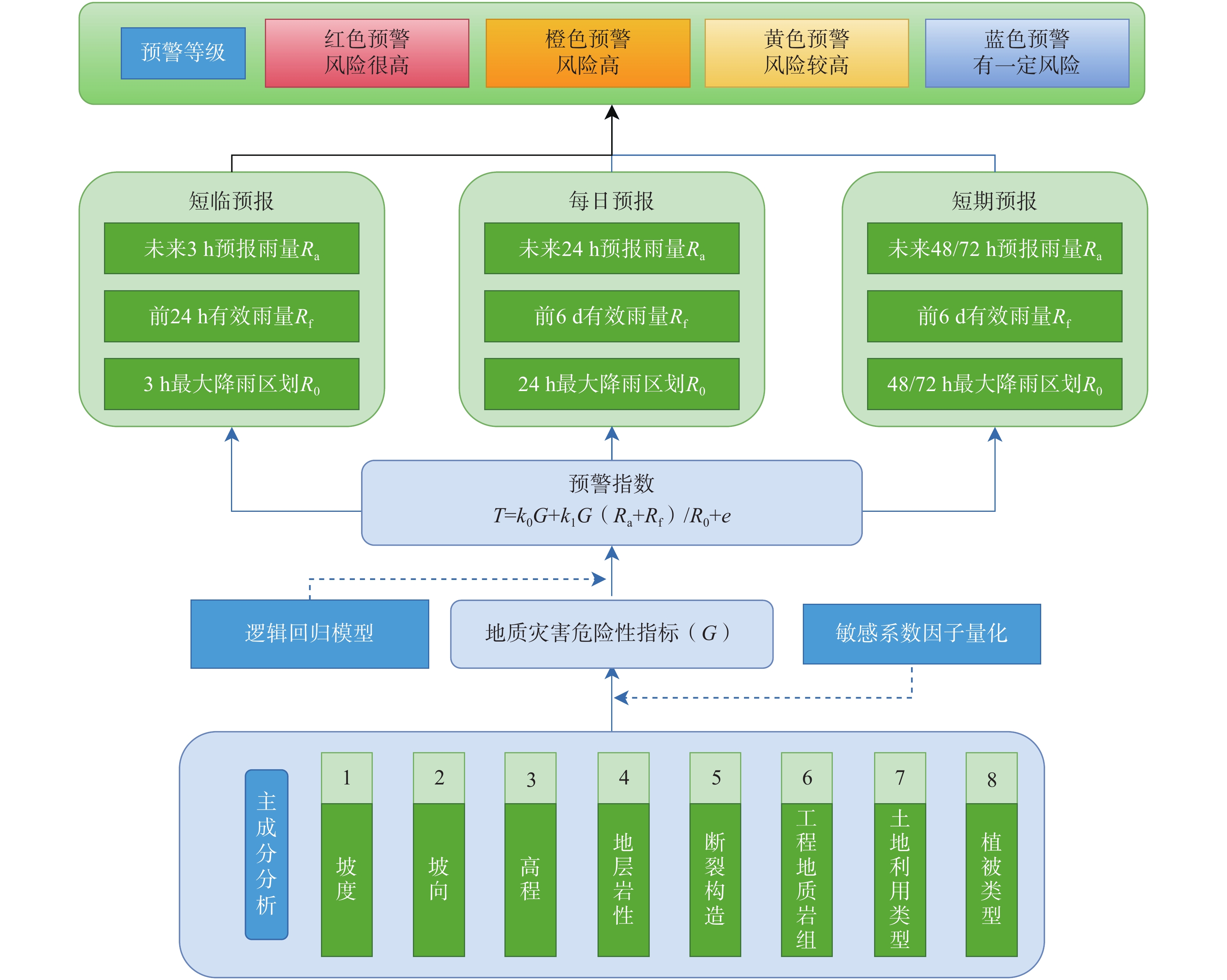








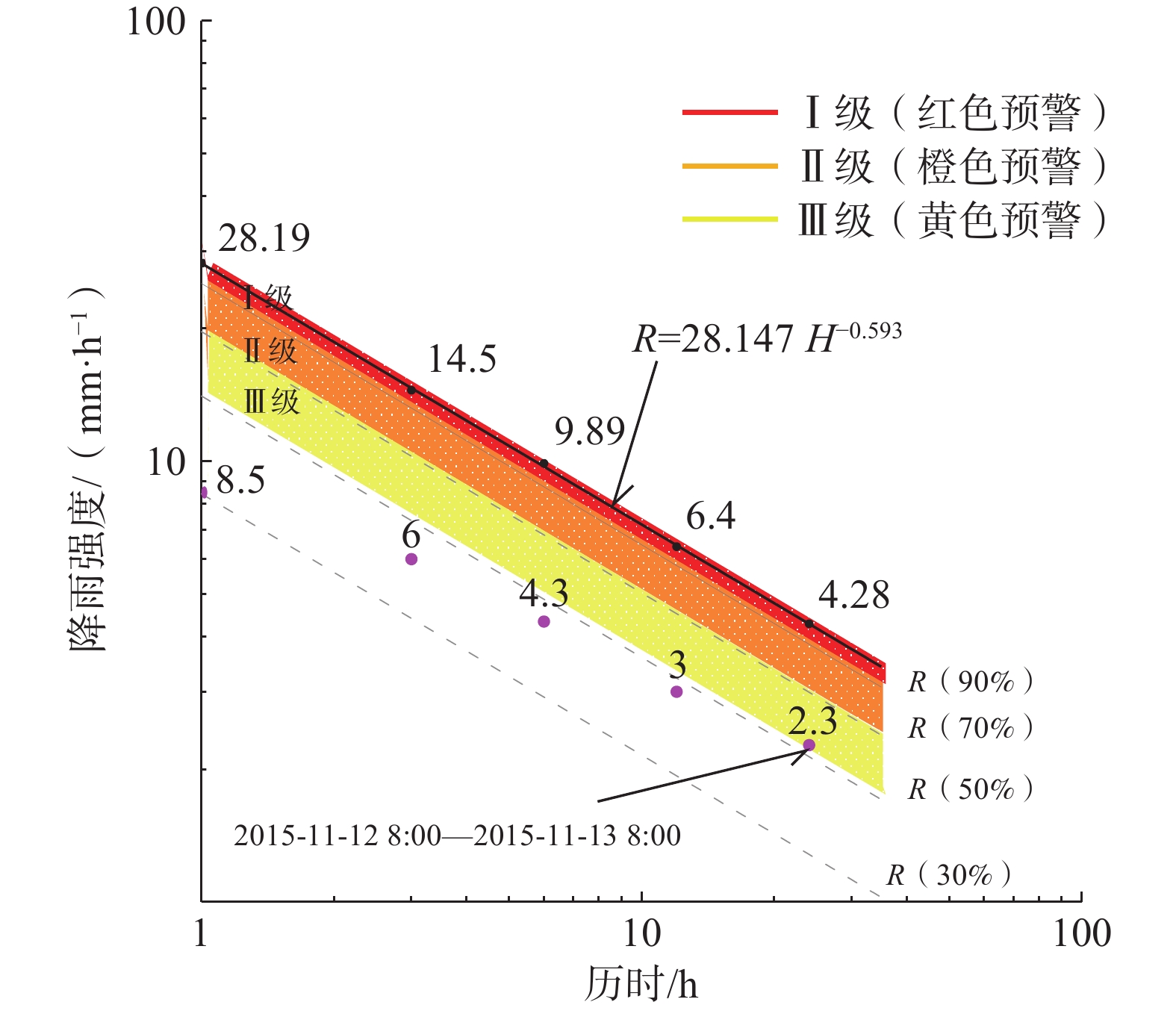








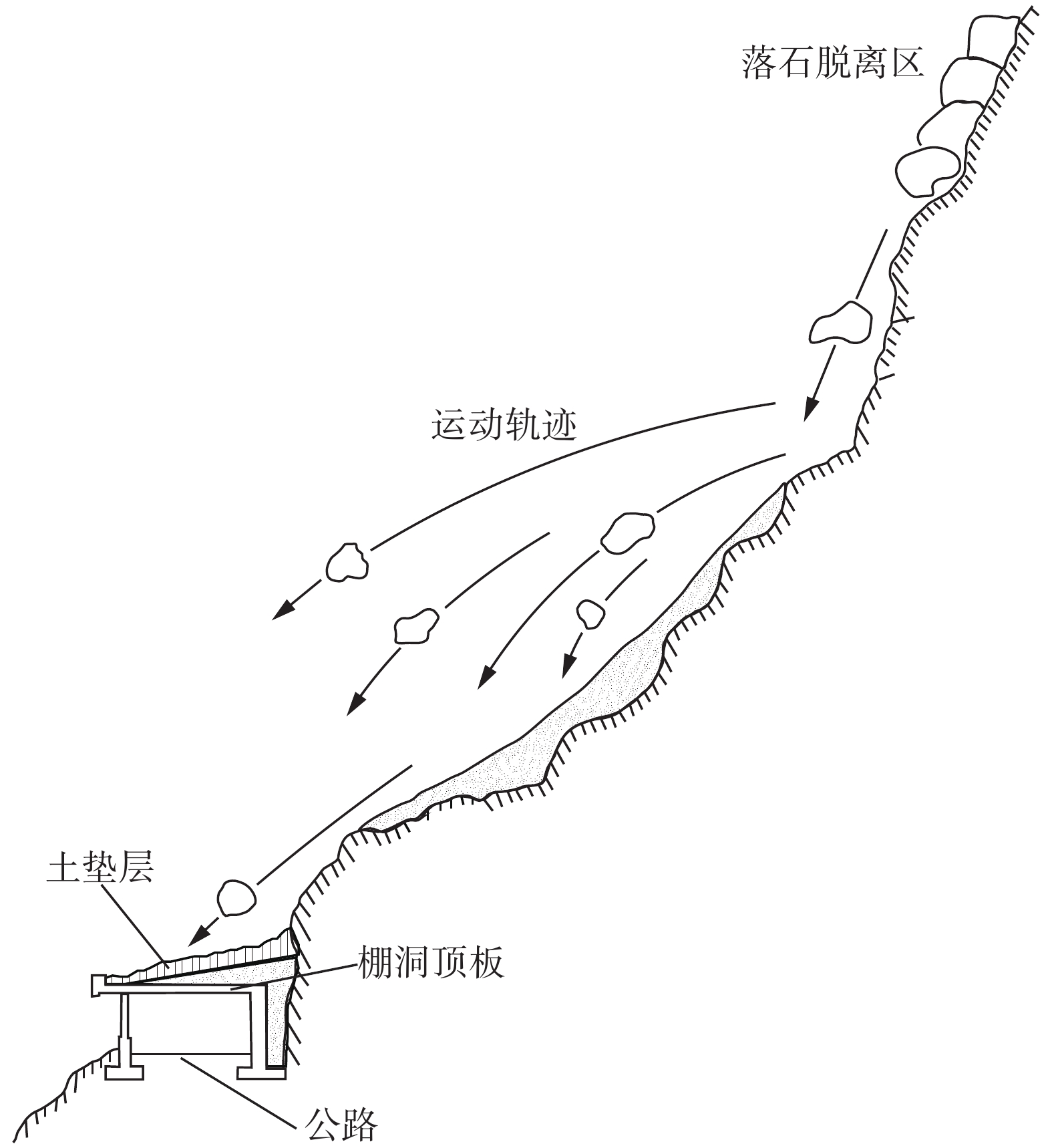
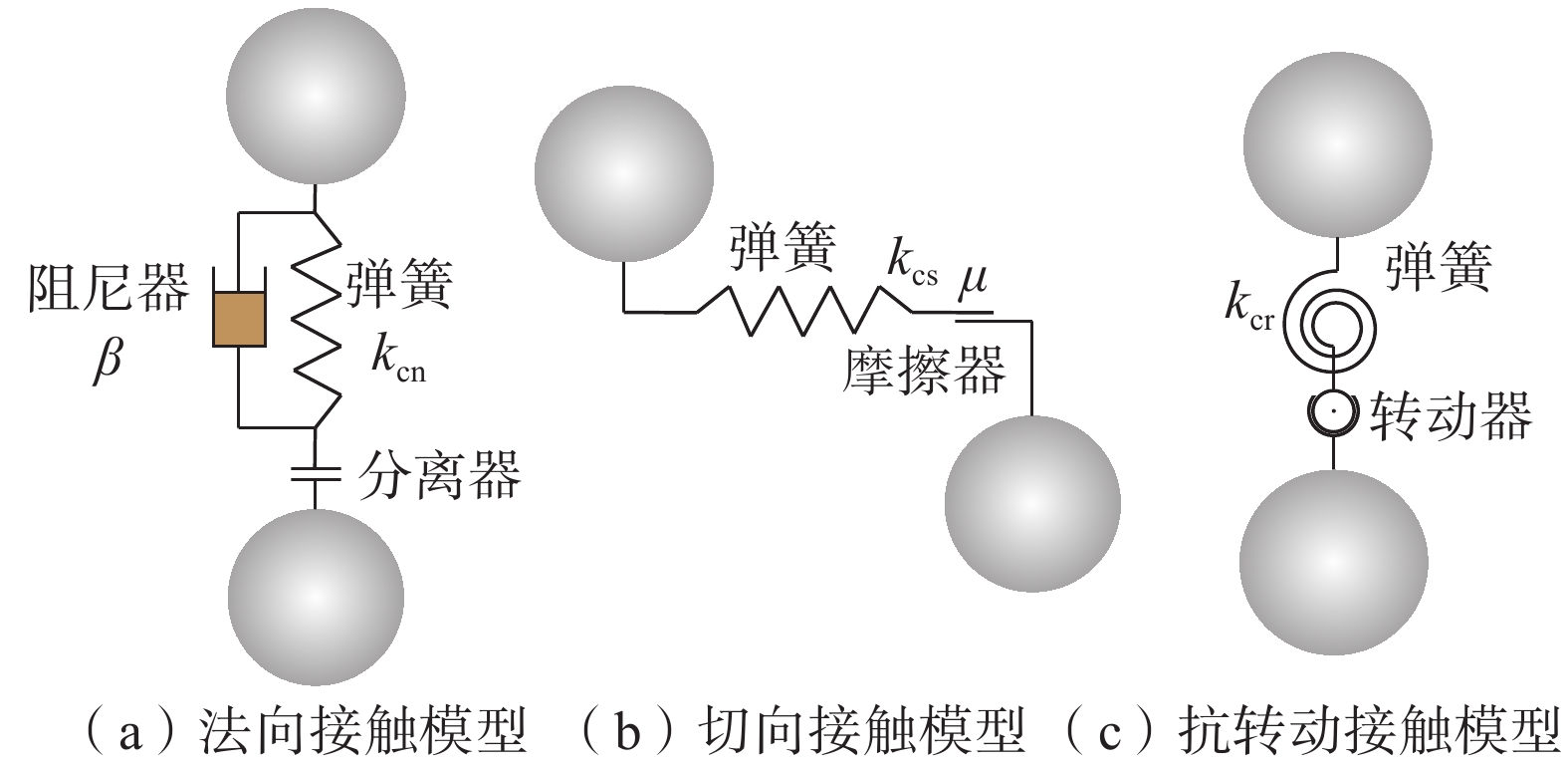
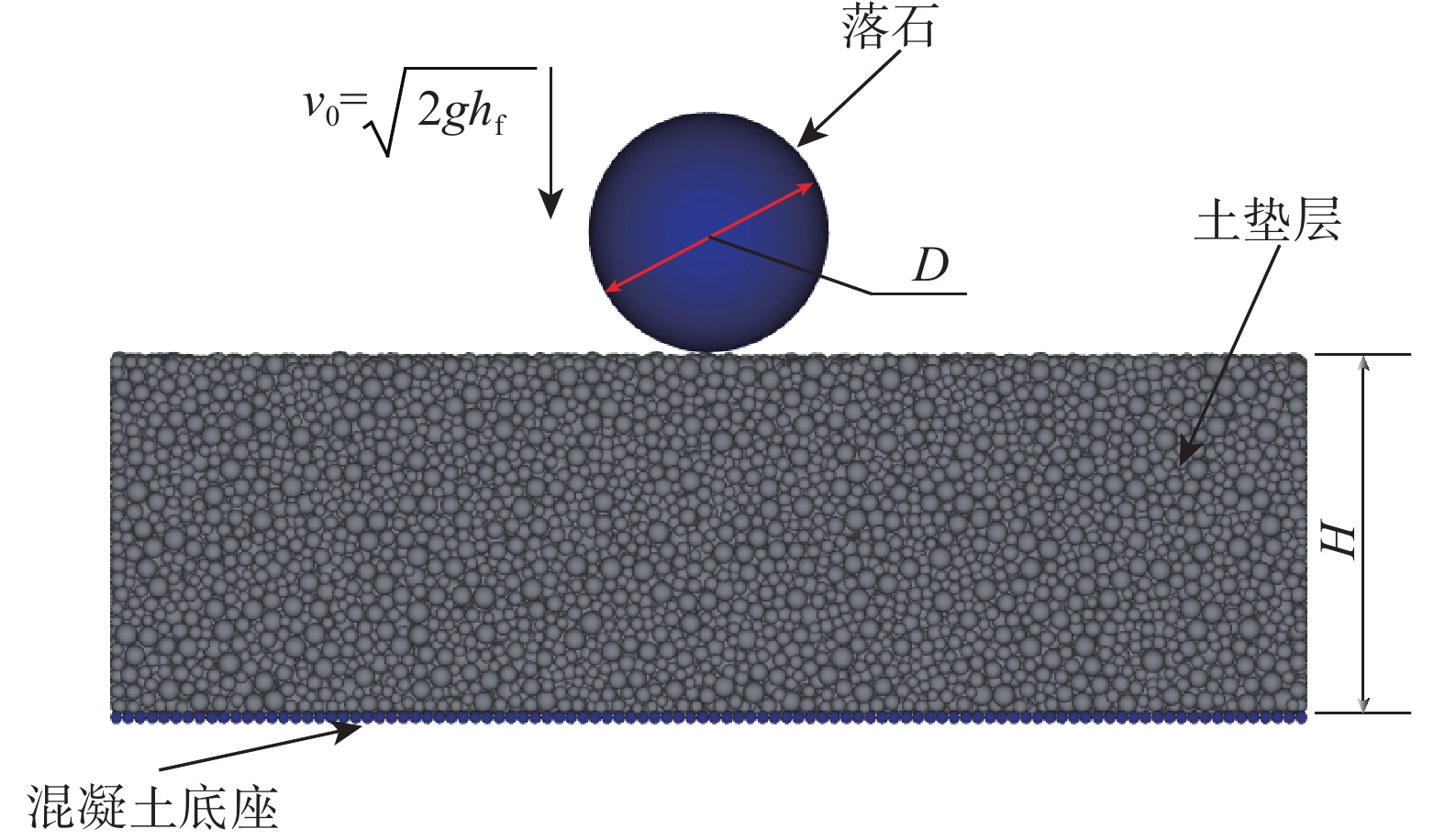
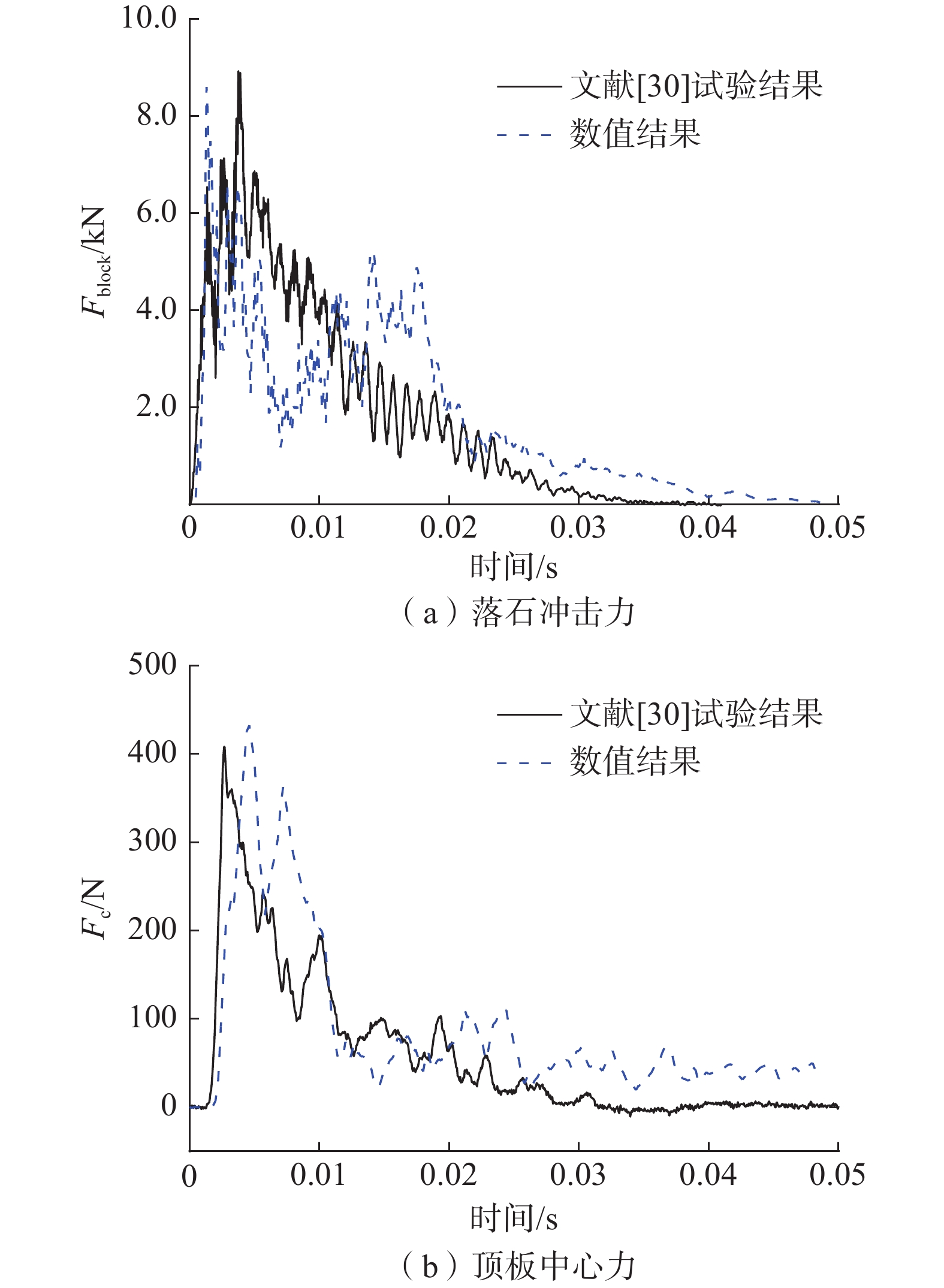
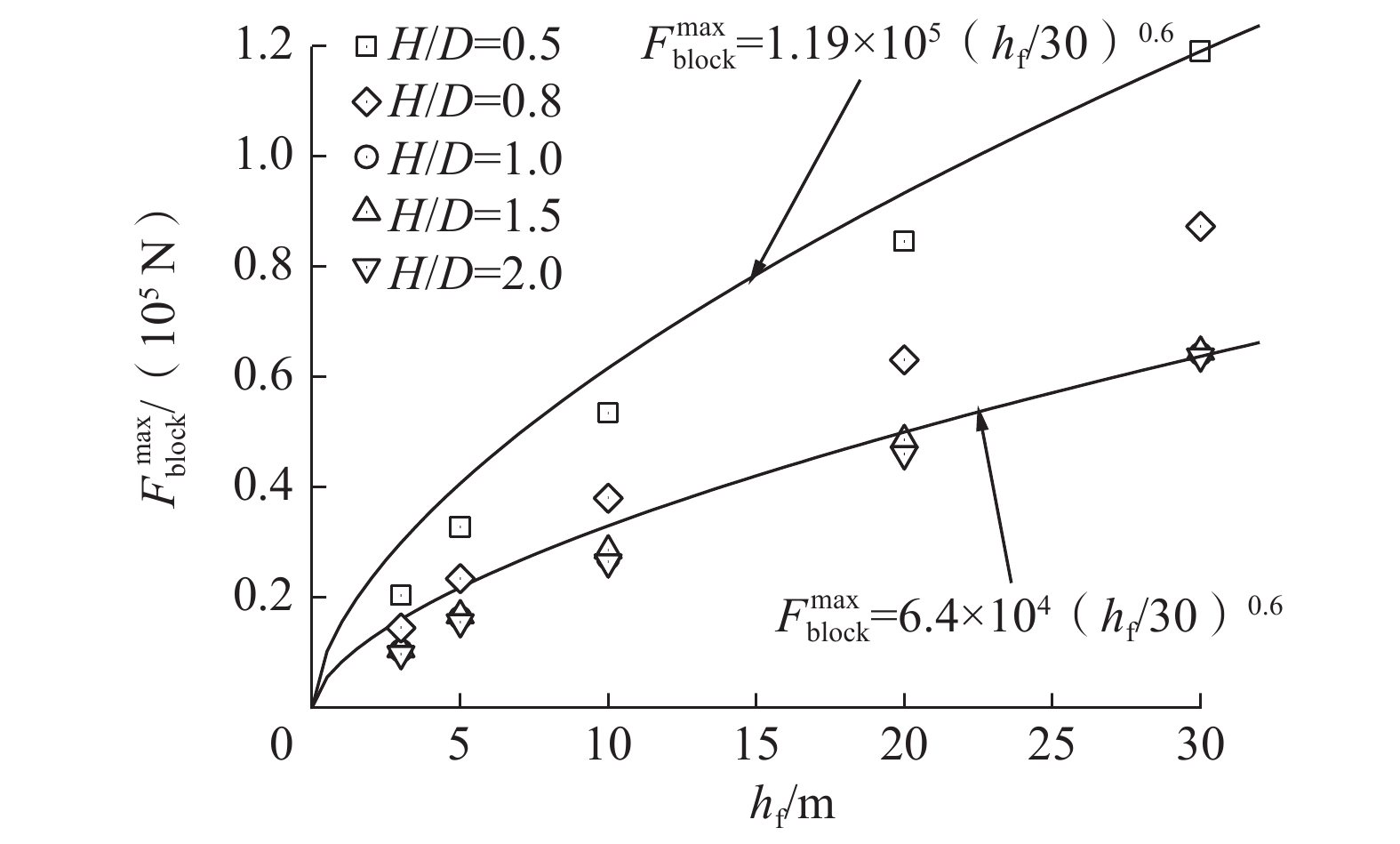
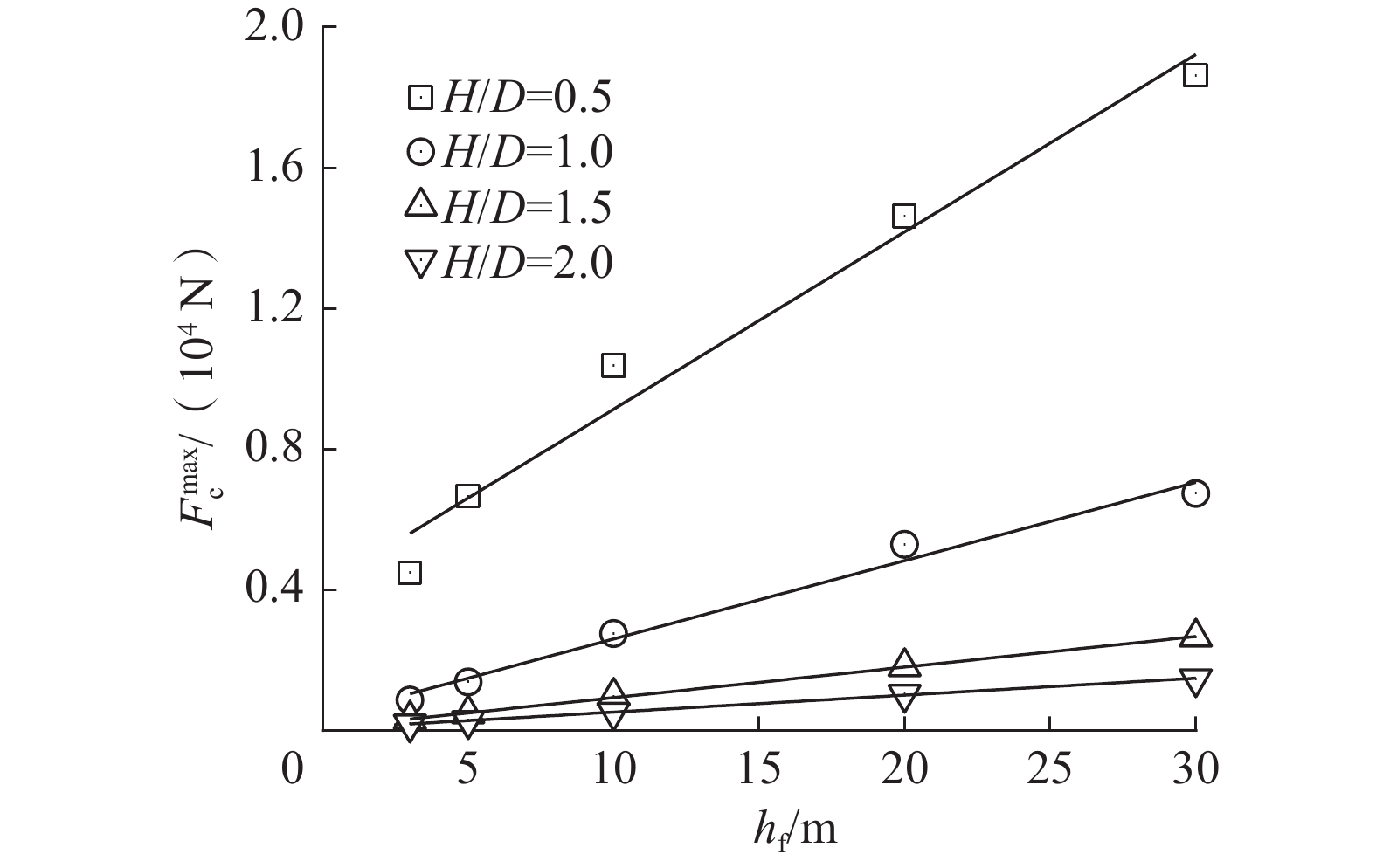
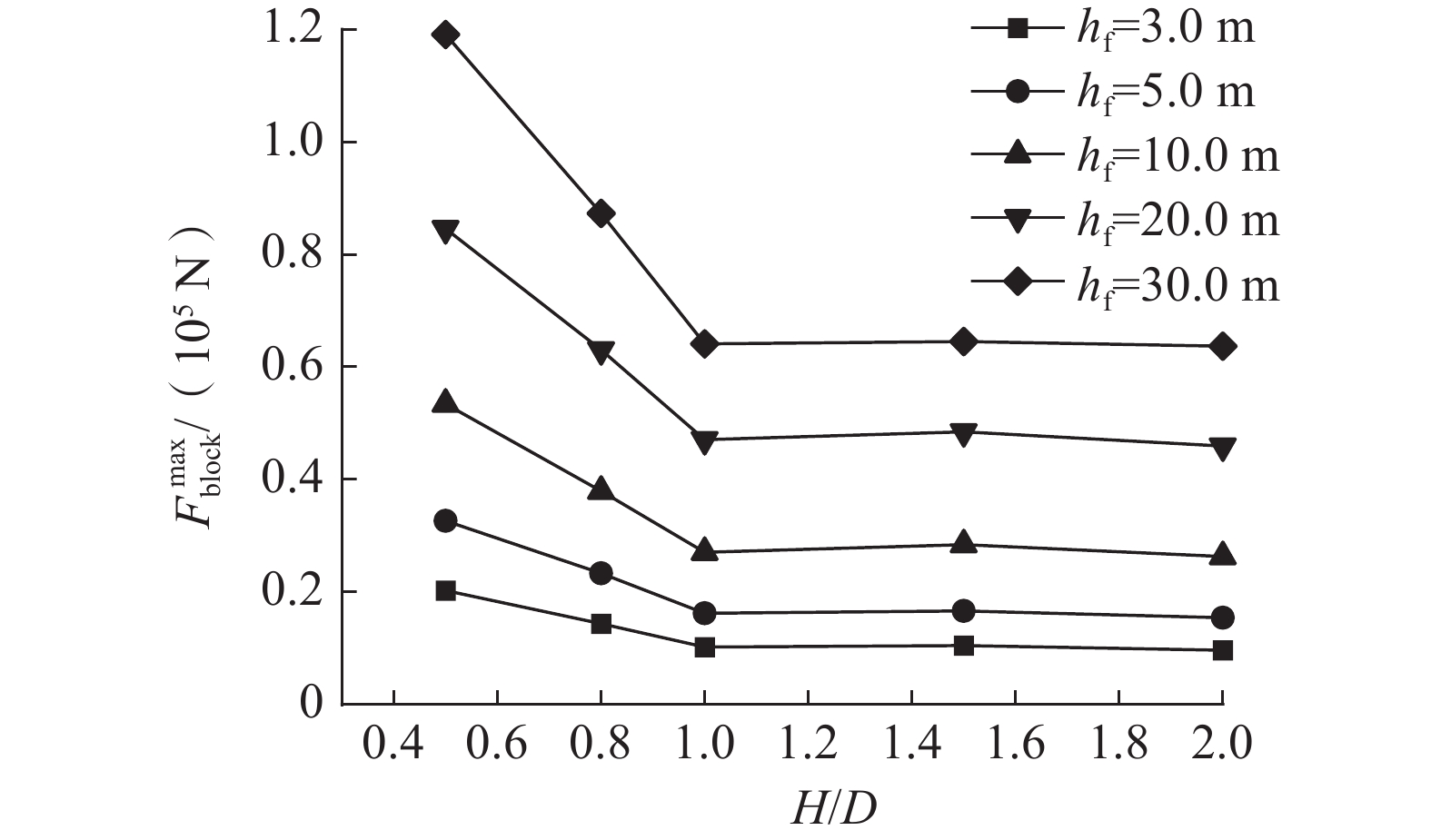
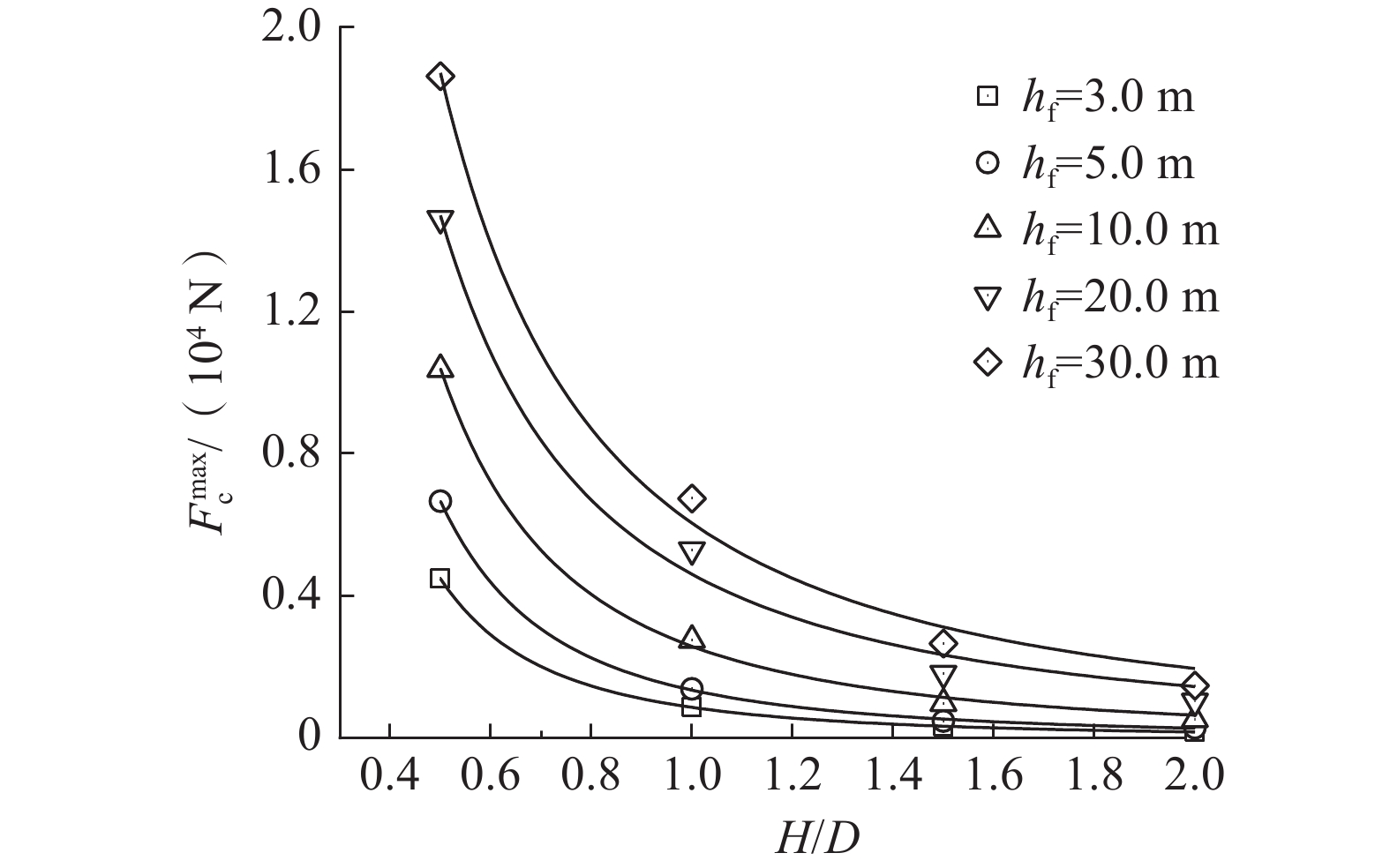
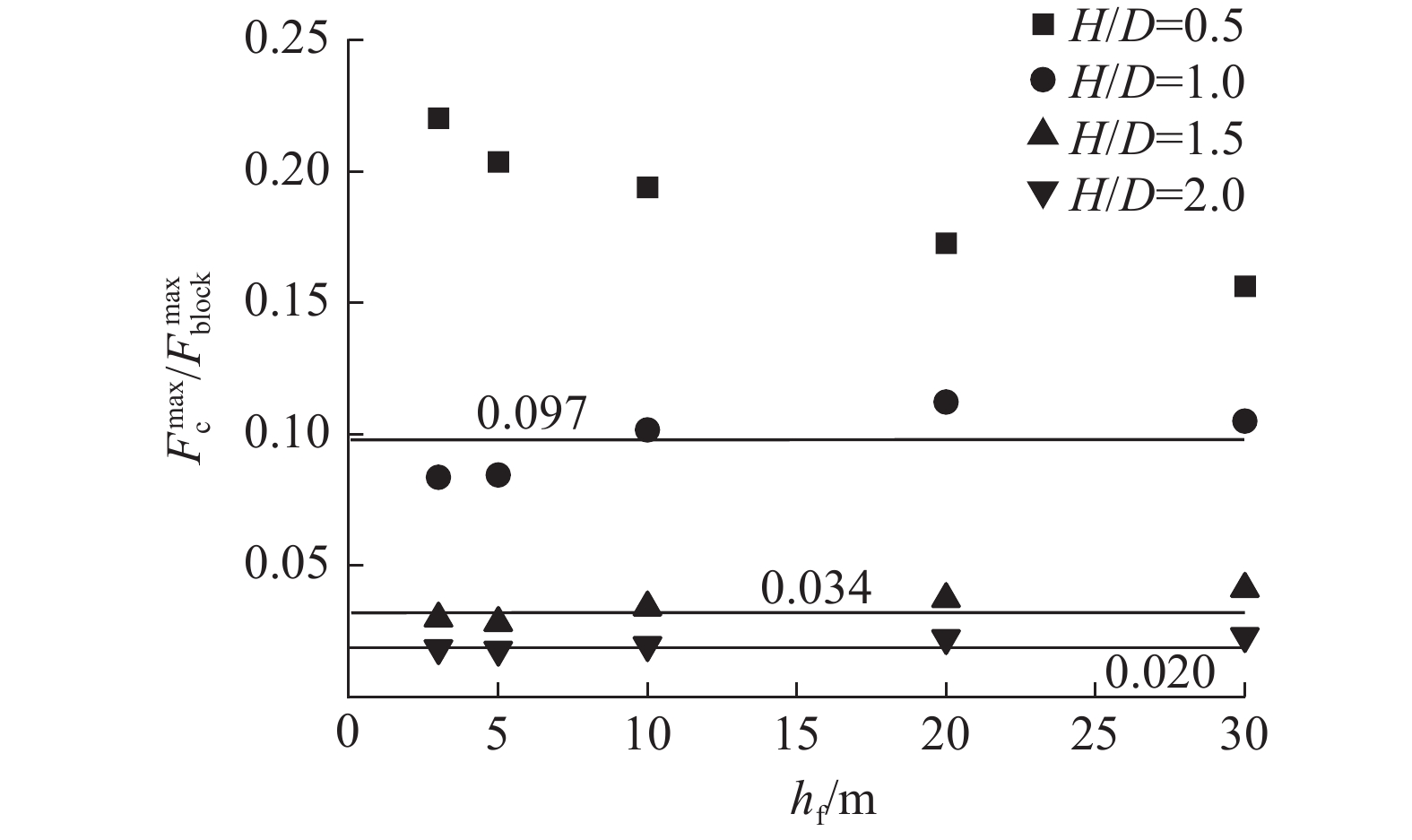
 邮件订阅
邮件订阅 RSS
RSS